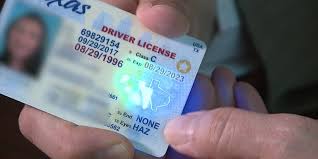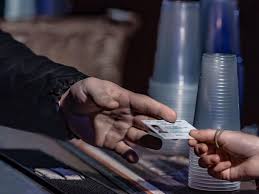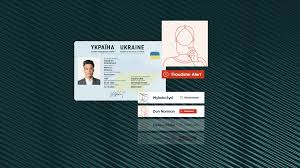do you need license to drive a moped
Do You Need a License to Drive a Moped? Understanding the Basics
Picture this: A sunny day, a gentle breeze on your face, and the open road ahead. You’re cruising on a moped, enjoying the freedom and simplicity of two-wheel travel. Mopeds, with their lightweight frames and easy handling, are perfect for those looking for an efficient way to navigate city streets or embark on weekend adventures. But before you hop on and rev the engine, there's a pressing question you need to answer: Do you need a license to drive a moped?
The answer isn’t as straightforward as you might think. The need for a license to operate a moped varies depending on several factors, including where you live, the type of moped you plan to ride, and your age. Here’s a breakdown of what you need to know to ensure you’re riding legally and safely.
What Is a Moped? A Quick Overview
First, let’s clarify what exactly a moped is. While the term "moped" often conjures images of small, motorized scooters, there’s more to it. Legally, mopeds are typically defined as two-wheeled vehicles with an engine size of 50cc or less, a maximum speed of 28 to 30 miles per hour, and often have pedals, similar to a bicycle. Some mopeds are purely electric, adding another layer to the licensing question.
Licensing Requirements: Country and State Differences
In the United States, the requirement for a license to drive a moped varies significantly from state to state. Some states, like California and New York, require a standard driver's license or a specific motorcycle license to operate any motorized two-wheeled vehicle, including mopeds. Other states, such as Florida and Texas, may only require a basic driver's license, while places like Georgia have specific moped licenses for younger riders.
In many European countries, regulations are similarly varied. For example, in the UK, you need to complete a Compulsory Basic Training (CBT) course to ride a moped if you’re under the age of 17. France requires a road safety certificate for riders under 18, while in Italy, you need an AM license, which is a category specifically for mopeds.
Why Do These Rules Vary So Much?
The reason for these differences often boils down to road safety concerns and the way mopeds are categorized in each region. In areas with denser traffic and higher accident rates, stricter licensing laws are in place to ensure that riders are equipped with the necessary skills to handle their vehicles safely. Additionally, the variation in climate, road types, and the prevalence of mopeds in daily use can all influence the specific regulations.
Special Considerations for Electric Mopeds
With the rise of electric mopeds, some people wonder if the rules are different. The answer is: sometimes. Electric mopeds are still subject to the same power and speed limitations that define a traditional moped. However, some regions may have separate licensing requirements for electric vehicles. Always check your local regulations to ensure you’re compliant.
Riding Without a License: Risks and Consequences
You might be tempted to take your chances and ride without the proper license. However, the risks far outweigh any perceived benefits. Riding a moped without a license can result in hefty fines, legal fees, and even the impounding of your vehicle. More importantly, it can lead to safety hazards for both you and other road users. Licensed drivers have demonstrated a basic level of competence and understanding of traffic laws, which is essential for safe riding.
How to Get Your Moped License: Steps to Stay Legal and Safe
So, you’ve decided to go the legal route and get your moped license. Congratulations! Here’s how you can go about it, depending on your location and the type of moped you intend to ride.
Step-by-Step Guide to Obtaining a Moped License
Check Local Regulations: Start by visiting your local Department of Motor Vehicles (DMV) or equivalent agency’s website. Look for information specific to mopeds or motorized bicycles. This will give you a clear idea of what kind of license you need, whether it’s a regular driver’s license, a motorcycle license, or a special moped permit.
Complete Required Training: In some places, especially in Europe, you may need to complete a training course. This often includes both theoretical and practical components. Theoretical lessons will cover road signs, traffic laws, and basic vehicle maintenance, while practical lessons focus on riding skills and safety maneuvers.
Pass a Written Exam: Many places require a written exam to test your knowledge of traffic laws, road signs, and moped-specific regulations. Study guides are often available through your local licensing authority or online.
Take a Road Test: If required, schedule a road test. This test usually involves demonstrating your ability to control the moped, obey traffic signals, and navigate common road scenarios safely. Some areas have specific courses laid out for this test.
Submit Documentation: After passing all the necessary tests, you’ll need to submit various forms of identification and proof of residency, along with any other required documentation, such as a certificate from a training course.
Pay the Licensing Fee: There is typically a fee associated with obtaining a moped license, which varies by region. Make sure to check the cost beforehand so you’re prepared.
Receive Your License: Once everything is submitted and approved, you’ll receive your moped license. Now you’re ready to hit the road!
Tips for New Moped Riders
Now that you’re licensed and ready to ride, here are some essential tips to keep in mind:
Wear Proper Gear: Always wear a helmet and other protective gear, such as gloves and a jacket. Even at low speeds, accidents can happen, and protective gear can make a big difference.
Stay Visible: Mopeds are smaller than most vehicles on the road, making them harder to see. Wear bright or reflective clothing, especially at night, and always use your headlights.
Follow Traffic Laws: Just because you’re on a smaller vehicle doesn’t mean you can ignore the rules of the road. Adhering to speed limits, signaling your turns, and respecting other road users is crucial for your safety.
Be Aware of Your Surroundings: Always be on the lookout for other vehicles, pedestrians, and road hazards. Mopeds, due to their size and speed, require extra vigilance.
Maintain Your Moped: Regular maintenance checks can prevent many common issues that might lead to accidents. Check the brakes, tires, and lights frequently to ensure your moped is in good condition.
Conclusion: Enjoy the Ride, Stay Safe
Riding a moped can be a fantastic way to get around, offering freedom, convenience, and a bit of fun. However, it's crucial to understand the licensing requirements and follow them carefully. Not only does this keep you on the right side of the law, but it also ensures that you're prepared to handle your moped safely and responsibly. With the right license, training, and attitude, you can enjoy all the benefits of moped travel while minimizing risks. So go ahead, get licensed, and enjoy the ride!
I hope this article provides a comprehensive overview of whether you need a license to drive a moped and how to go about getting one if you do. Stay safe and happy riding!
 Fake Florida DL
Fake Florida DL
 scannable Fake US-Green Card
scannable Fake US-Green Card
 scannable Fake US-SSN
scannable Fake US-SSN
 scannable Fake Califomia-Handi
scannable Fake Califomia-Handi